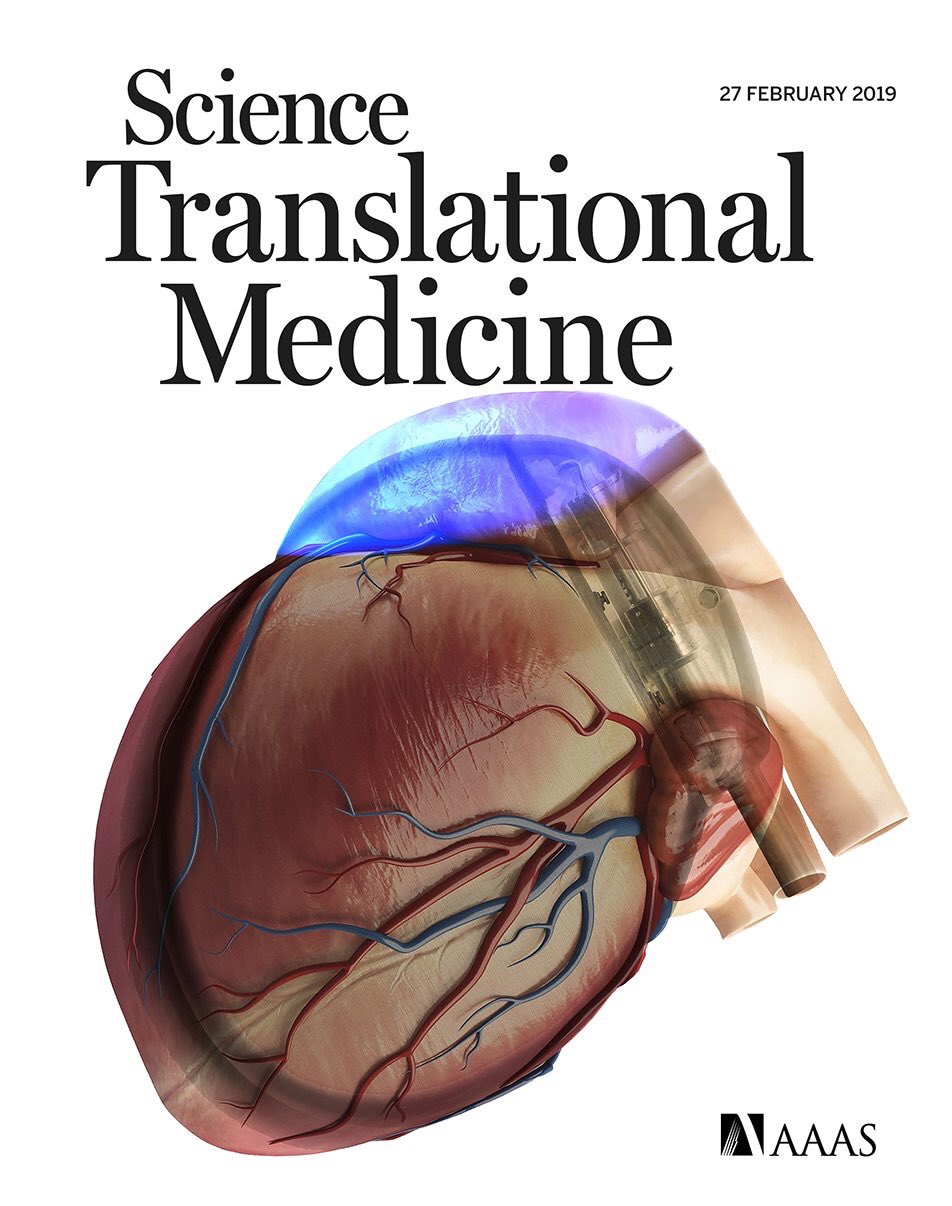Researchers from Delft and Leiden have found a way to reset a racing heart with an implanted LED device, paving the way for pain-free treatment for patients with arrhythmias.
The researchers described their bioelectronic defibrillator this week in the journal Science Translational Medicine. (Image: Cover over Science Translational Medicine)
Atrial fibrillation is an irregular, rapid heartbeat that interrupts normal blood flow and increases the risk of stroke and blood clots. Normal heart rhythm can be restored by electroshock (electrical cardioversion). But although the use of automated implantable atrial defibrillators was studied in the mid-1990s and proved to be safe and effective in ambulatory treatment, most of the recipients of these devices discontinued therapy because of their intolerance to repeated cardioversion shocks. Excitation of nerves and skeletal muscles by these electroshocks cause pain and can damage myocardial tissue. Drugs can sometimes also offer a solution. Yet many patients have been found to be drug resistant.
Gene therapy
Rather than supply exogenous current, researchers at the Leiden University Medical Center (LUMC) and TU Delft developed a bioelectronic defibrillator. They tested their technique on rats. The system developed by the research groups detects fast arrhythmias in the atrium of a rat’s heart and sends a signal to a LED device placed near the heart. The flash of light from this LED causes the heart to generate an electric current itself to halt the arrhythmia. This is made possible by using gene therapy to introduce specific light-sensitive proteins into the heart. The researchers described their technique this week in the journal Science Translational Medicine.
Implantable LED lamp
René Poelma, a researcher in TU Delft’s Microelectronics department, is the second author of the article in Science Translational Medicine. Together with Professor Kouchi Zhang, he developed the implantable LED lamp. “One of the things required to reset a racing heart muscle is high light intensity at the correct wavelength, but there is not much space in the body for this. This is why we developed a miniature LED lamp that, once implanted, spreads sufficiently intense light over a relatively wide area,” he explains.
More research needed
The treatment for atrial fibrillation could, in theory, improve both the patient’s quality of life and their prognosis. But the researchers emphasise that considerable research is still needed before treatment is suitable for patients. Next in line are experiments with pigs. Pigs’ hearts resemble human hearts more closely than rat’s hearts do.
200,000 patients in the Netherlands
In the Netherlands alone there are an estimated 200,000 patients suffering from Atrial fibrillation. That number is expected to rise due to the aging population. At the age of 65 and over, one in five people suffers this kind of irregular heartbeat.
Do you have a question or comment about this article?
tomas.vandijk@tudelft.nl


Comments are closed.